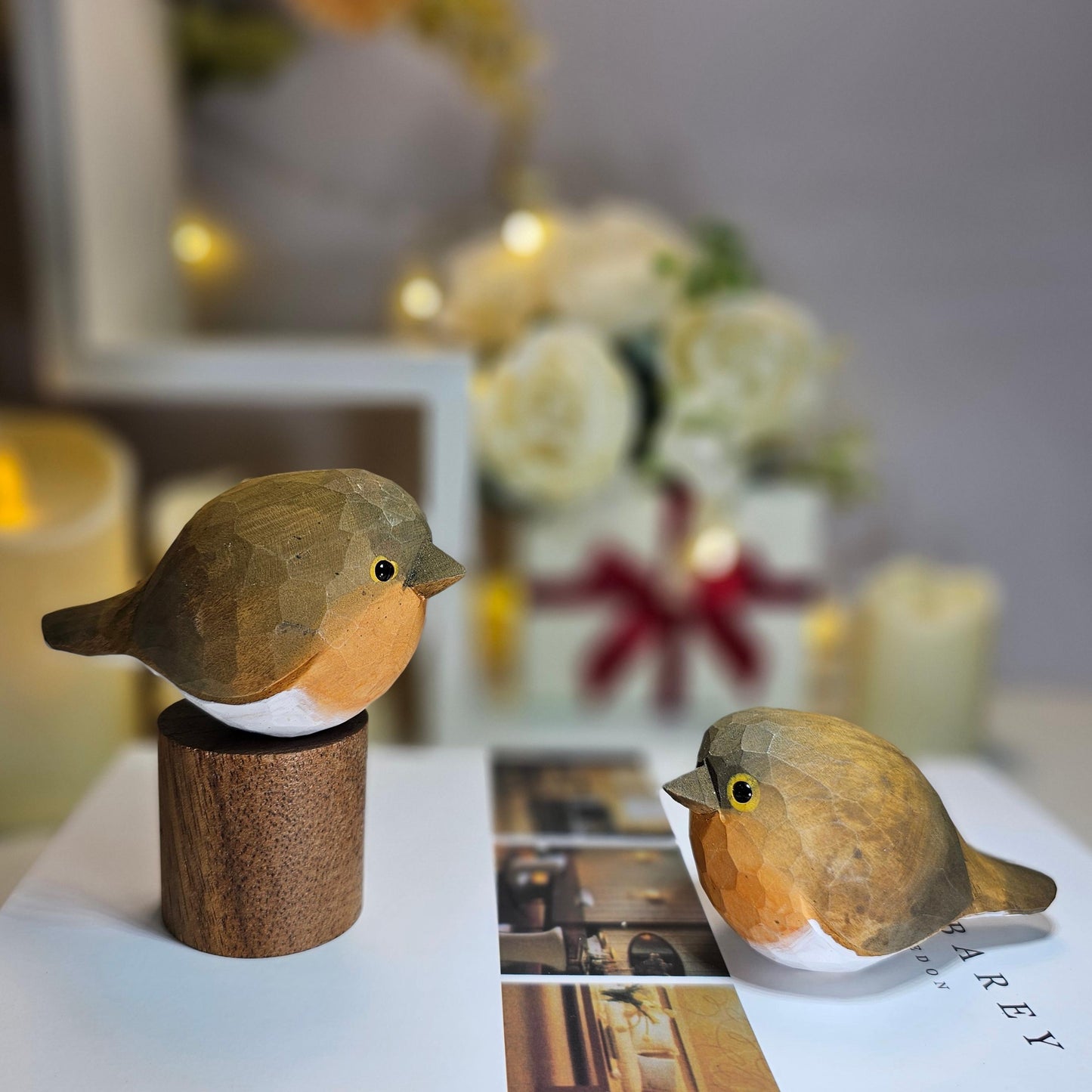
The Enchanting Charm of the European Robin: A Beloved Icon of Nature
Share
The robin bird, often known as the European robin or scientifically as Erithacus rubecula, is a small passerine bird that has captivated the hearts of many with its charming appearance and melodious song. Found across Europe, parts of Western Asia, and North Africa, this bird is a common sight in gardens, woodlands, and shrublands.
Physical Characteristics
The European robin is easily recognizable by its vibrant orange-red breast and face, contrasted with its olive-brown upper parts and a white belly. Adult robins are about 12.5-14.0 cm in length, making them a small but noticeable presence in their natural habitat. Their round eyes and petite stature add to their endearing appearance.

Behavioral Traits
Robins are known for their territorial nature, especially the males, which vigorously defend their breeding grounds. These birds are diurnal, mostly active during the day, and their diet consists mainly of insects, worms, seeds, and fruits. One of the most intriguing aspects of the robin’s behavior is its fearlessness around humans, often approaching closely while one gardens or walks through their territory.
Vocalizations and Communication
The robin's song is one of its most distinctive features. Both males and females sing year-round, using various tunes to attract mates, declare territory, or respond to other robins. The song is a melodious, fluid warble that can be heard from a considerable distance, particularly in the early morning and late evening.
Breeding and Nesting Habits
 Robins are monogamous during the breeding season, with pairs forming in late winter. They build nests in secluded spots, often on the ground or low in hedges. The female lays and incubates a clutch of 4-6 light blue eggs, and both parents are involved in feeding the fledglings.
Robins are monogamous during the breeding season, with pairs forming in late winter. They build nests in secluded spots, often on the ground or low in hedges. The female lays and incubates a clutch of 4-6 light blue eggs, and both parents are involved in feeding the fledglings.
Cultural Significance
The robin holds a special place in many cultures, particularly in Britain where it is considered a symbol of Christmas. This association is partly due to its presence in gardens during winter and its prominent red breast, reminiscent of the festive season.
Conservation Status

Fortunately, the European robin is classified as Least Concern by the IUCN, thanks to its wide distribution and stable population. However, like all wildlife, robins face challenges from habitat loss and environmental changes.
The robin bird remains a beloved symbol of the natural world, enchanting people with its beauty and songs. Its presence is a reminder of the intricate connections within ecosystems and the joy that wildlife can bring into our lives.










